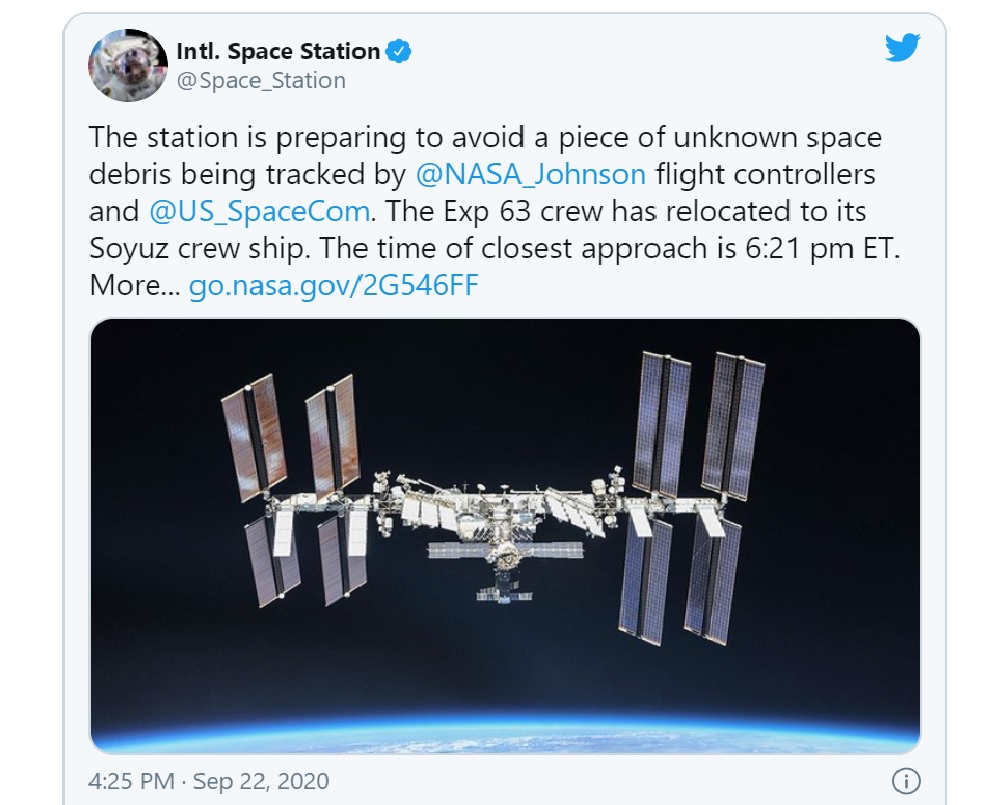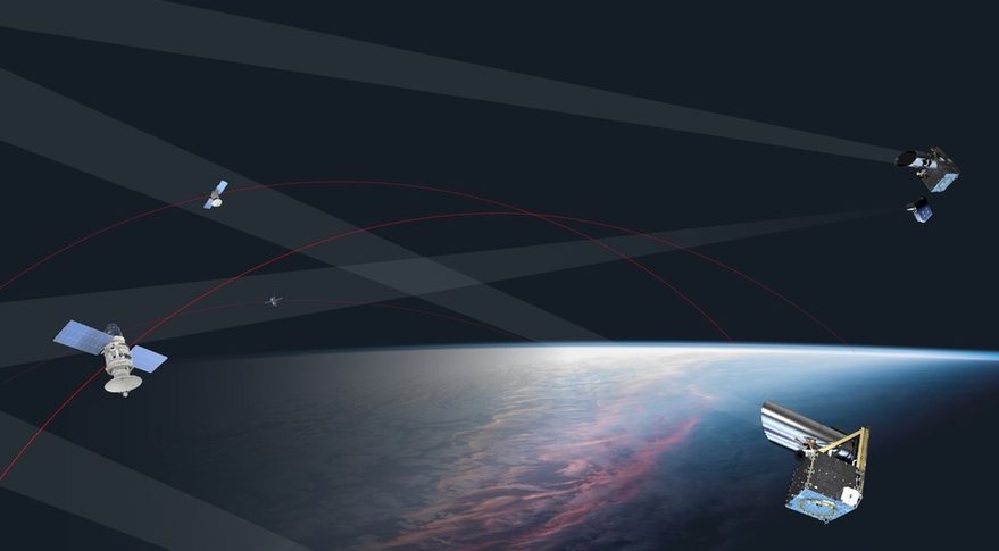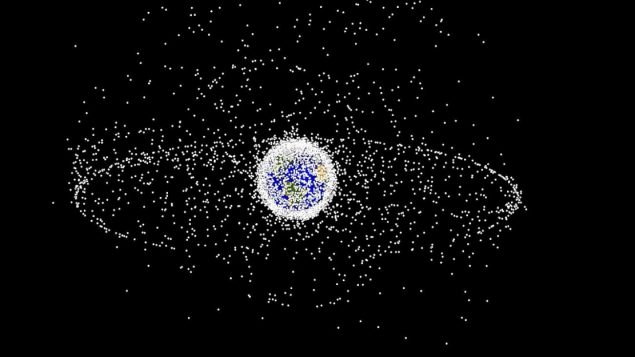If you counted all the satellites put into space since ‘Sputnik’ in 1957, you’d find that about half of them, roughly 5,000 are still up there speeding around the Earth in various trajectories and at various heights. Added to this are the occasional lost bolt, spatula, 15kg tool bag with tools, camera, and pliers.
Also spinning around are spent boosters and parts of other space stations, and debris from past collisions of ‘stuff’. In 2009 a Russian military satellite crashed into a US commercial satellite creating a cloud of about 600 more bits of various sizes sent off in new directions and trajectories.

The US space shuttle Endeavour had a major impact on its radiator during STS-118. The entry hole is about 1⁄4 inch, and the exit hole is twice as large..
All this orbiting debris is monitored from the ground and tracked so that hopefully it won’t result in destruction of operational satellites, the International Space Station, or even astronauts on space walks.
In fact NASA has an ‘orbital debris program office‘ to keep track of the clutter, now in the order of about half a million bits, some 23,000 of which are bigger than a softball. But NASA is only one of many government and private tracking operations.
When objects appear to be on a collision course there is sometimes a possibility to move them out of the way. This was the case for the ISS in September which took evasive action and the astronauts evacuated temporarily to the Russian pace capsule, in case.

ISS tweet Sept 22. 2020
But ground tracking isn’t as accurate as satellite operators would like. It can also be blocked out by weather conditions.
A Canadian company is proposing a series of space-based tracking satellites to provide more accurate data of objects and trajectories.
Montreal-based NorthStar Earth and Space has contracted Thales Alenia to build the first three of a planned 12 satellite ‘Skylark’ constellation system to monitor ‘space traffic’.Seattle-based LeoStella LLC will oversee final assembly.
It will become the first commercial firm to monitor movement of objects in orbit from space itself. Such traffic monitoring is called ‘space situational awareness’ (SSA).
This is important because so much of what we do on earth, from mobile phones, to GPS, broadcasting, tracking of ships and aircraft, weather tracking and forecasting and so on depends on satellites, and if one is taken out by another, or errant piece of debris, then there’s a real problem and an extremely expensive one too.

Canadian firm NorthStar is proposing a constellation of traffic monitoring satellites to give more accurate assessment of objects and trajectories to avoid accidents ( NorStar)
Stewart Bain, is NorthStar’s CEO. Quoted by he CBC he said, ” “We’ve got the International Space Station up there. We’ve got astronauts going back and forth. We’ve got stuff flying around from a bunch of satellites and constellations. You want to make sure you know where things are with metre precision, not kilometre precision.
The European Space Agency says there’ve been some 12 accidental breakups in the past 20 years. With some 50,000 new launches expected in coming years, ‘SSA’ will become increasingly important.
Bain says there’s a demand for such commercial service like NorthStar and he hopes to get both corporate and government business.
The first satellites are expected to be launched in 2022
Additional information-sources
- Space News: J Foust: Oct 27/20: NorthStar orders three satellites to collect space situational awareness
- Betakit: I Kirkwood: oct 27/20: Montreal startup NorthStar begins construction of satellites to monitor debris in space
- Business Insider Australia: J Orwig: Sep 24/15: Space ‘junk’ is at a critical density
- CBC: N Mortilaro: Nov 1/20: Canadian satellites to help combat threat of collisions in Earth orbit
- NASA space debris tracking
- Reuters (Guardian UK): NorthStar and Thales Alenia Space to begin work on satellites to combat space collisions







For reasons beyond our control, and for an undetermined period of time, our comment section is now closed. However, our social networks remain open to your contributions.